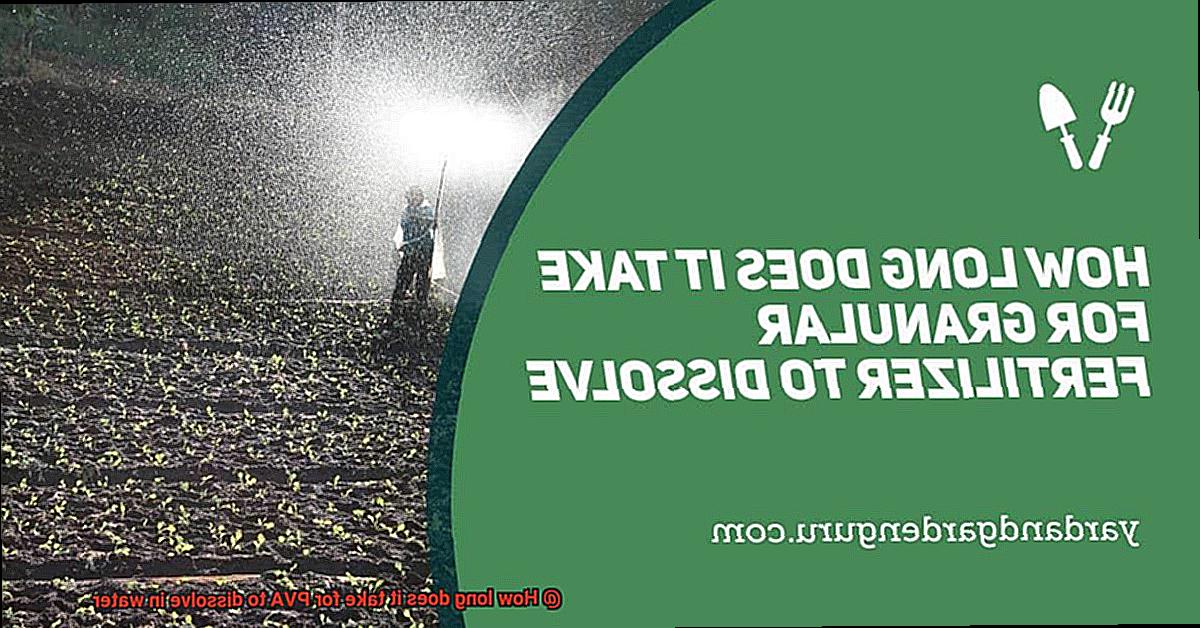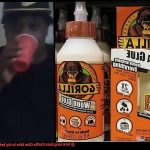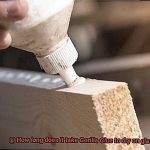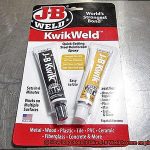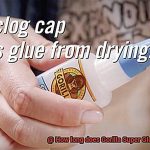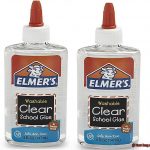Do you know how long it takes for Polyvinyl Alcohol (PVA) to dissolve in water? Whether you’re a craft enthusiast, an artist, or a scientist working with PVA, understanding how this material behaves in water is crucial. Maybe you’re whipping up some glue for your DIY project or using PVA to create a mold for your experiment. Either way, knowing how long it takes for PVA to dissolve in water can make or break the success of your project.
PVA is a versatile polymer that dissolves slowly in water and creates a solution with various practical properties. But what factors determine how long it takes for PVA to dissolve completely in water? The concentration of PVA, the temperature of the water, and the method of mixing all play vital roles.
In this blog post, we’ll delve into the science behind PVA and its behavior in water. We’ll explore the mechanics of PVA dissolution by examining hydrogen bonding and other chemical processes. Whether you’re an artist seeking new ways to use PVA or a curious mind eager to learn about its properties, this blog post is perfect for you.
What is PVA Glue?
Contents
When it comes to crafting, having the right adhesive can make all the difference. And one type of adhesive that has become increasingly popular in recent years is PVA glue. Also known as polyvinyl acetate glue, PVA glue is a synthetic polymer made by polymerizing vinyl acetate monomers. But what exactly makes PVA glue so great?
For starters, PVA glue dries clear, making it a go-to choice for projects where aesthetics are a top priority. And with a relatively fast drying time of around 24 hours, it’s ideal for those who want to move on to the next step of their project quickly.
But PVA glue’s benefits don’t stop there. It’s also non-toxic and safe for kids to use, which is a huge plus for parents looking for a crafting adhesive that won’t harm their little ones. And thanks to its water-soluble nature, PVA glue can be washed off easily with water while still wet, making cleanup a breeze.
However, it’s important to note that PVA glue isn’t waterproof and shouldn’t be used for projects that will be exposed to water. In addition, the amount of time it takes for PVA to fully dissolve in water can vary depending on several factors such as temperature, concentration of the glue, type of PVA glue used and amount of agitation during mixing process. Therefore, it’s important to follow the manufacturer’s instructions closely.
Factors that Affect the Dissolution Time of PVA
Polyvinyl alcohol (PVA) is a versatile synthetic polymer that is widely used as an adhesive in various industries. However, the dissolution time of PVA in water can be a major challenge, especially when you’re pressed for time. Luckily, there are several factors that affect the dissolution time of PVA, and by understanding and controlling these factors, you can achieve efficient PVA dissolution for your projects.
Firstly, let’s talk about the concentration of the PVA solution. The concentration of PVA in the solution is one of the most significant factors that affect its dissolution time. Higher concentrations of PVA result in stronger intermolecular bonds that require more energy to break down and dissolve in water. So if you need your PVA glue to dissolve quickly, consider diluting the solution for faster results.
Temperature is another crucial factor that affects the dissolution time of PVA in water. As the temperature increases, the rate of molecular motion increases, leading to faster dissolution of PVA in water. However, too much heat can cause PVA to degrade or lose its adhesive properties, so it’s essential to maintain an optimal temperature range.
The pH level of the water used for dissolving PVA can also impact its dissolution time. Generally, PVA dissolves faster in acidic or alkaline solutions than neutral solutions. This is because changes in pH levels can affect the intermolecular forces between PVA molecules and water molecules, thus altering its solubility properties.
Lastly, agitation can help accelerate the dissolution rate of PVA. Effective agitation methods include shaking or stirring with a magnetic stirrer or vortex mixer. However, too much agitation can cause foaming or air entrapment, leading to longer dissolution times.
Temperature of Water
Dissolving Polyvinyl alcohol (PVA) can be a daunting task, but fear not. With a little understanding of the science behind it, you can dissolve PVA like a pro. Temperature, in particular, plays a significant role in the process.
It’s no secret that warmer water dissolves PVA more quickly than colder water. This is because warmer water molecules move faster and possess greater kinetic energy, breaking down the PVA molecules with ease. For those on a time crunch, using warm water is your best bet to achieve swift PVA dissolution.
However, caution must be taken not to use water that is too hot. Boiling water can alter the properties of PVA, rendering it useless for your project. It’s best to use warm water that isn’t boiling to avoid this issue entirely.
In addition to temperature, stirring the PVA mixture continuously while dissolving it in water is crucial. Uneven dispersion or clumps of undissolved glue can compromise the effectiveness of your project’s bond. Therefore, ensure that all glue particles are evenly dispersed and fully dissolved by stirring continuously during the process.
To sum up, understanding how temperature affects PVA dissolution in water can make all the difference in achieving optimal results for your projects. By controlling factors such as concentration, temperature, pH level, and agitation, you can produce the perfect harmony for your projects like conducting an orchestra.
Concentration of Glue
The concentration of glue is a crucial factor that can impact the time it takes for PVA to dissolve. As an expert on this topic, I can help you understand how different concentrations of glue affect the dissolution process.
PVA glue is available in various concentrations, ranging from 5% to 50%. The higher the concentration, the longer it may take for the glue to dissolve in water. This is because higher concentrations of PVA contain more solid particles that take longer to break down in water. Therefore, if you’re using a 50% concentration of PVA glue, be prepared to wait a bit longer for it to dissolve compared to a 5% concentration.
But that’s not all; the temperature of the water also plays a role. Warm water can speed up the process, while colder water may slow it down. If you’re in a hurry, consider using warm water to dissolve your PVA glue quickly.
It’s important to note that other factors like surface type and thickness can also impact how long it takes for PVA to dissolve in water. For instance, applying glue on a porous surface may require a higher concentration of glue, which will take longer to dissolve than if applied on a smooth surface.
Type of PVA Glue
PVA glue is a popular adhesive option for a variety of projects. But did you know that not all PVA glues are created equal? There are different types available, and the kind you choose can impact its reaction to water.
Three common types of PVA glue include white glue, school glue, and wood glue. White glue is an all-purpose adhesive that works well with porous materials such as paper and cardboard. It takes around 30 minutes to dry and up to 24 hours to fully cure. When exposed to water, it can start to dissolve in just a few minutes.
School glue is similar to white glue, but it is specifically designed for classroom use. It dries clear, is non-toxic, and can be easily cleaned up with water. Like white glue, it takes around 30 minutes to dry and can start to dissolve in water after a few minutes.
Wood glue is the strongest of the three and is designed for use with wood materials. It forms a more robust bond than white or school glue and is waterproof when dry. Wood glue can take up to 24 hours to cure, depending on humidity and temperature. Compared to white or school glue, wood glue takes longer before it starts to break down when exposed to water.
It’s essential to note that some PVA glues are labeled “water-resistant” or “waterproof.” These types of adhesives are designed to resist moisture and may take longer to dissolve in water than regular PVA glues.
Overall, the type of PVA glue you choose can significantly affect its reaction to water. All types of PVA glues will ultimately dissolve in water over time, but the time it takes can vary depending on the type of glue and level of exposure. When selecting your adhesive, be sure to consider the project’s requirements and opt for a water-resistant or waterproof option if necessary.
Agitation During Mixing Process
The key to achieving optimal results lies in the process of agitation during the mixing process. As an expert in this field, I’m here to share with you the ins and outs of how agitation affects the dissolution of PVA particles in water.
Agitation refers to the movement or stirring of the mixture to facilitate the mixing process. Essentially, it is adding energy to the mixture, breaking down PVA particles and speeding up the dissolution process. However, determining the intensity and duration required is not a one-size-fits-all approach.
Several factors come into play when determining the level of agitation required. The concentration of PVA, temperature, and volume of water all influence the intensity and duration of agitation needed for complete dissolution. A higher concentration of PVA requires more agitation to dissolve completely. Similarly, higher temperatures and larger volumes of water can also affect the agitation required for complete dissolution.
The type of equipment used also plays a crucial role in determining the level of agitation necessary. High-speed mixers or blenders may provide more agitation than a simple hand stirrer. Adjusting the speed and duration of mixing is essential depending on the equipment used.
However, excessive agitation can cause foaming, leading to air bubbles in the mixture that can affect its quality. Thus, it’s crucial to strike a balance between efficient mixing and avoiding foaming by adjusting mixing parameters accordingly.
To summarize, agitation during the mixing process is crucial in facilitating the dissolution of PVA particles in water. By considering several factors such as concentration, temperature, volume, and equipment used, we can determine the intensity and duration required for optimal results. In addition, it’s important to note that finding a balance between efficient mixing and avoiding foaming is crucial for maintaining quality results.
How Long Does it Take for PVA to Fully Dissolve in Water?
The concentration of your glue is key. To optimize the dissolution rate, it’s recommended to use a ratio of one part glue to one part water. This should take around 30 minutes to an hour to fully dissolve under normal conditions.
But if you’re in a hurry and want to speed up the process, try using warmer water. Higher temperatures increase the molecular motion of both the water and PVA molecules, allowing them to mix more easily and resulting in a quicker dissolution time. However, be careful not to use water that is too hot, as this can affect the quality of your glue. Stick to lukewarm water for best results.
Another thing to keep in mind is the pH level of your solution. PVA glue is slightly acidic, with a pH level of around 4.5-5.If the pH level of your water is too low or too high, it may affect the solubility of the glue and make it more difficult to dissolve. So make sure to keep your water at a neutral pH level for optimal results.
In general, it takes about 30 minutes to an hour for PVA glue to fully dissolve in water under normal conditions. However, this can vary depending on factors like concentration, temperature, and pH levels. And even after it appears fully dissolved, there may still be some residual particles or clumps present. To ensure a completely homogenous solution, it’s recommended to mix thoroughly and let it sit for a few minutes before using it.
Tips for Quickly Dissolving PVA in Water
Dissolving PVA in water can be a tedious process, especially when you need it done quickly. But don’t worry, we’ve got you covered with these tips and tricks to speed up the process.
Use Warm Water
The temperature of the water plays a crucial role in how quickly PVA glue dissolves. Warm or hot water will dissolve PVA much faster than cold water. The heat helps break down the polymer chains and makes them more soluble in water. However, avoid using boiling water, as this can denature the glue.
Use Distilled or Deionized Water

Tap water can contain minerals and impurities that interfere with the dissolution of PVA. Using distilled or deionized water can help ensure a quicker and more complete dissolution.
Use a High-Speed Mixer
If you have access to a high-speed mixer, like a homogenizer or a high-shear mixer, use it to mix the PVA and water together at a very high speed. This breaks down the polymer chains and speeds up the dissolution process.
Add Salt
Adding salt to the mixture can help speed up the dissolution process. The salt helps break down the glue molecules, making it easier for them to dissolve in water. However, be cautious with this method as adding too much salt can affect the consistency and quality of your final product.
Increase Agitation
Stirring the mixture frequently can help dissolve PVA glue more quickly. Regular stirring helps distribute the glue evenly throughout the water, allowing it to dissolve faster. Use a spoon or spatula to stir gently but consistently until all of the glue has dissolved.
Benefits of Using PVA Glue
As an expert on the benefits of using PVA glue, I can tell you that this versatile adhesive is a game-changer for any crafter or DIY enthusiast.
One of the most significant perks of using PVA glue is its versatility. This adhesive can work on almost any surface, including wood, paper, and fabric. This means that you won’t have to switch between different adhesives for each project, saving time and money.
In addition to its versatility, PVA glue is incredibly easy to use. Simply apply it with a brush or spreader and let it dry to create a strong bond. And because it dries clear, you don’t have to worry about unsightly glue marks ruining the appearance of your project.
But what about durability? Rest assured that PVA glue is known for its ability to create long-lasting bonds that can withstand wear and tear. Whether you’re working on a woodworking project or repairing a broken item, PVA glue has got you covered.
And perhaps one of the best benefits of using PVA glue is its safety. Unlike many other types of adhesives, PVA glue is non-toxic and doesn’t emit harmful fumes. So go ahead and use it around children and animals without worry.
Safety Precautions When Handling PVA Glue
It’s important to prioritize safety when handling any type of adhesive. With that said, let’s explore some vital safety precautions to take when working with PVA glue.
Firstly, always protect yourself. Wearing gloves and goggles is crucial as PVA glue can be harmful if it comes into contact with your skin or eyes. If you accidentally get some glue on your skin, wash the affected area immediately with soap and water. If it gets into your eyes, don’t hesitate to flush them for at least 15 minutes and seek medical attention.
Secondly, ensure that your workspace is well-ventilated. PVA glue emits fumes that can be harmful if inhaled over a prolonged period of time. Keep a window open or use a fan to circulate fresh air in the room.
Thirdly, keep PVA glue out of reach of children and pets. Ingesting the glue can be toxic, so always store it securely to prevent any accidents from happening.
Lastly, dispose of PVA glue properly. Never pour it down the drain as it can harm plumbing systems. Instead, allow the glue to dry completely before disposing of it in the trash.
0ENgGkPP94w” >
Conclusion
To wrap things up, it’s clear that comprehending the dissolution time of Polyvinyl Alcohol (PVA) in water is vital for anyone utilizing this versatile polymer. The concentration of PVA, water temperature, and mixing method all factor into determining its dissolution rate. By skillfully managing these variables, you can achieve efficient PVA dissolution for your particular project.
PVA glue is a popular adhesive choice across various industries due to its non-toxicity, easy cleanup, and versatility. However, not all PVA glues are created equal. Different types of PVA glue react differently to water, which can impact their dissolution time.
When handling PVA glue, safety measures must be taken to prevent any adverse effects from skin contact or ingestion. Proper disposal and ventilation must also be considered when using this adhesive.
In conclusion, a solid grasp of the science behind PVA and its behavior in water is essential for optimal results in your projects.

